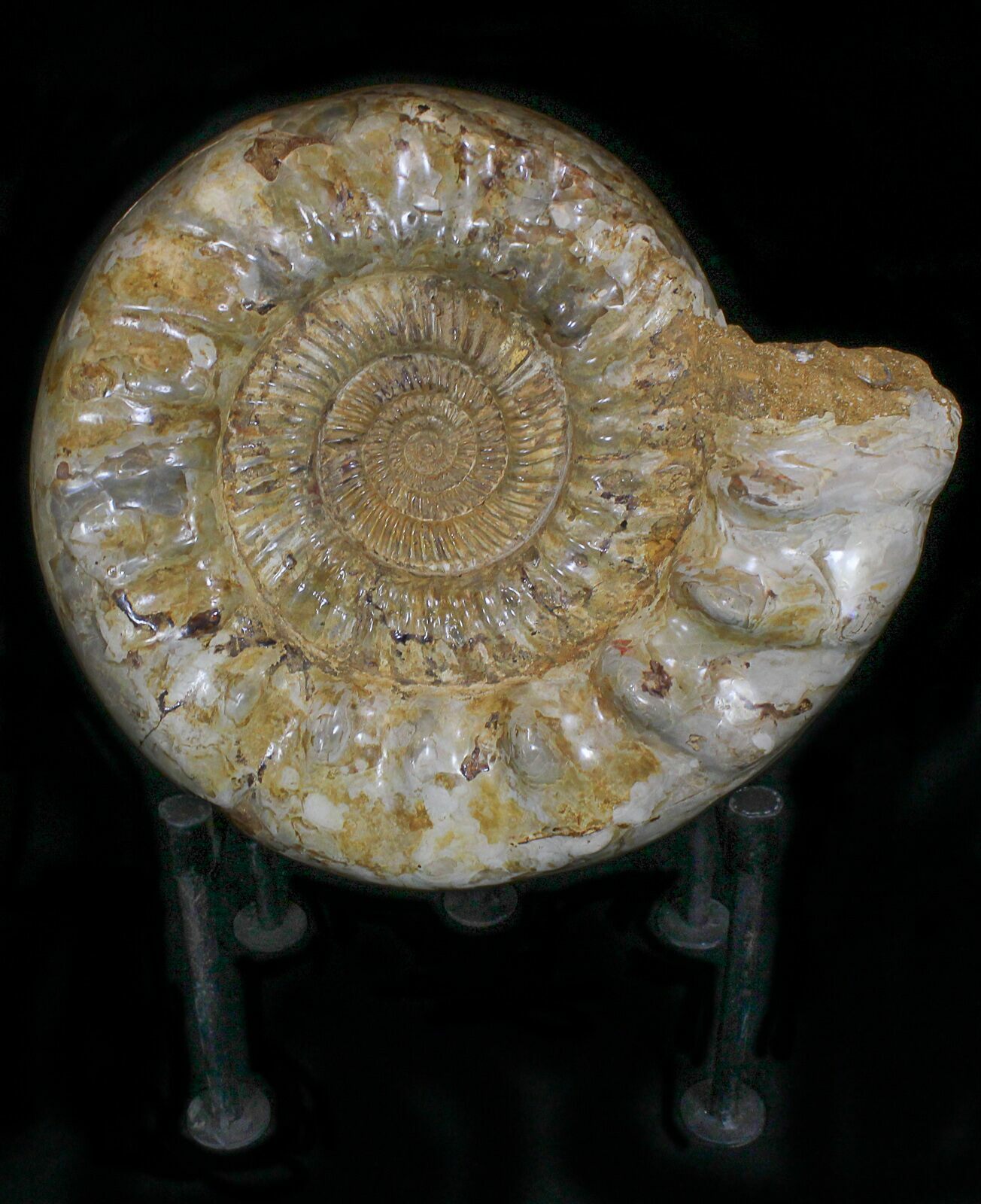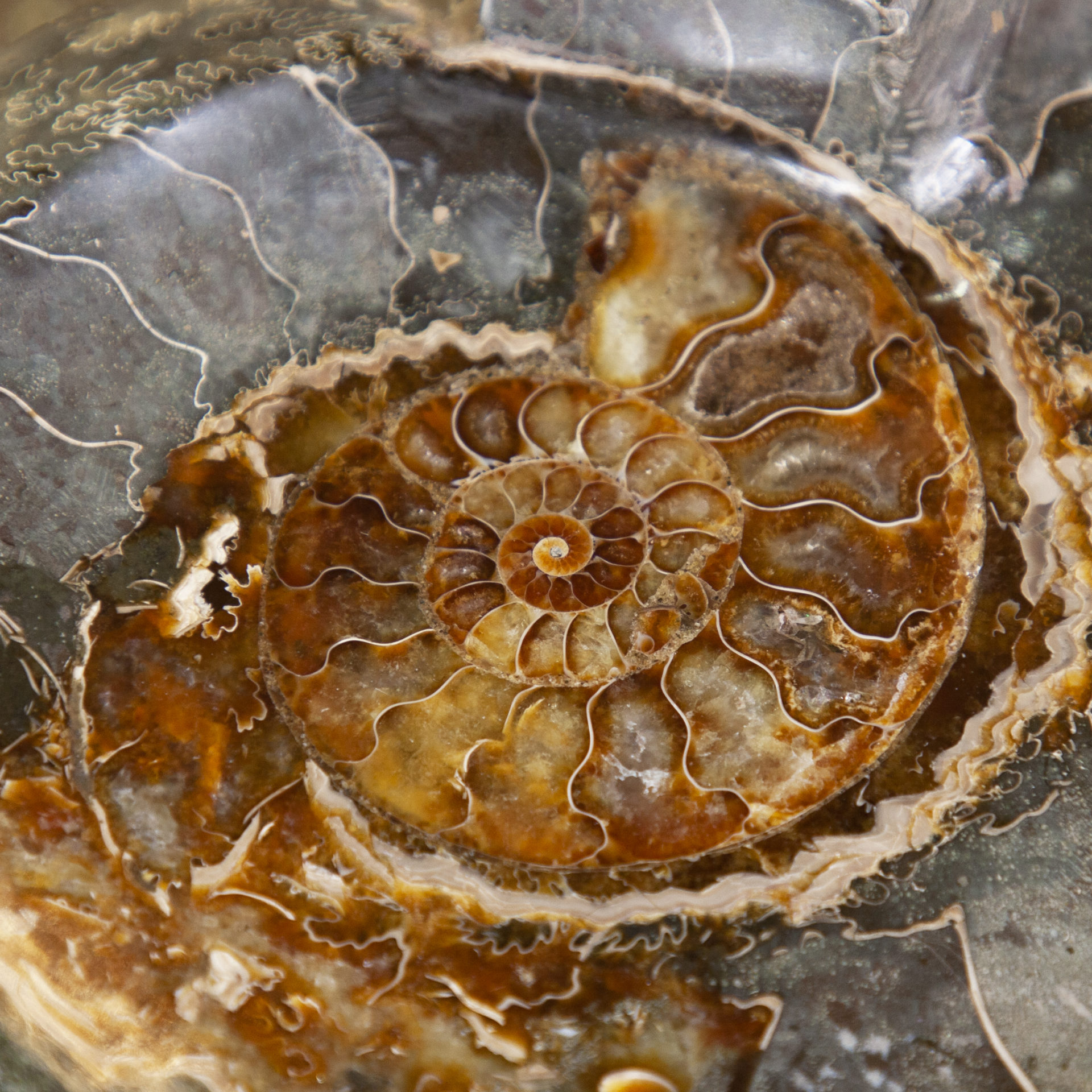
As it matured and grew, larger chambers were added at the opening.Īmmonite fossils are mostly natural stone casts or flattened compressed impressions of the former outer shell which left a cavity that served as the mold when first buried in prehistory.

Only the last and largest chamber was occupied by the living animal. Fossils are few and rare showing any soft body tissue so the concept of what the soft parts of these creatures looked like is speculative. The soft-bodied animal living in this shell most-likely resembled an octopus but with shorter arms. There are also other varieties called HETEROMORPHS which include members that have open helical-coiled and irregular-coiled shells, as well as straight shell examples. Ammonites were so plentiful throughout various stages of geologic history that scientists use them as INDEX FOSSILS whereby the presence of certain types in a rock layer can denote a specific time period.Īmmonites were mollusks with shells that were predominantly tightly coiled on a single plane like a wheel. They became especially abundant and widespread in the seas of the Jurassic and Cretaceous periods, 175 million to 65 million years ago. Ammonites first appeared during the Middle Devonian Period around 400 million years ago. It is a mystery as to why their modern relatives, the nautilus, squid, cuttlefish and octopus, did not go extinct. Ammonites shared the same fate as the dinosaurs and died out at the end of the Cretaceous Period, 65 million years ago. They belong to the subclass Ammonoidea, class Cephalopoda.

Every ammonite fossil we sell includes a written lifetime guarantee of authenticity & condition report / history sheet.Īmmonites are extinct invertebrates. This is important because in doing so, we can ensure their authenticity and nature of all work performed in the process. We sell only AUTHENTIC ammonite fossils for sale, all prepared by us in our on-site lab. This makes them ideal fossils to give as gifts or for use in display in a private or public setting.

To the average viewer, many fossils have to be explained as to what they are but ammonites have a universal form to their shell and their connection to the prehistoric ocean is almost self-explanatory. Unlike many other fossil types, ammonite fossils make an impressive interior design accent and their appearance is fascinating to many who would otherwise not have an interest in paleontology or fossils. Aside from collectors though, many love and purchase fossil ammonites because of their natural aesthetic and beautiful form, as well as their connection to the ocean. Collectors find them attractive because of their scientific history with the ancient sea, and the diversity and evolution of the shape of their shells. Fossil ammonites are what we like to call "cross-over fossils" in the sense of fossil collecting.


 0 kommentar(er)
0 kommentar(er)
